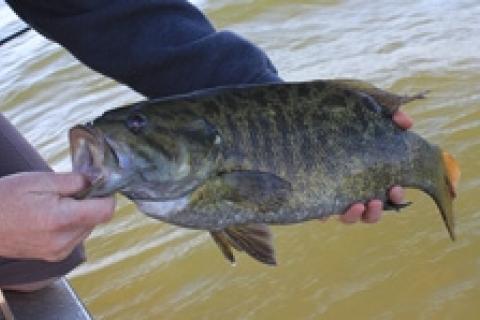
How a fly moves and sinks in the water column is one of the most important factors in enticing a fish into striking. Some fish will move less than a few inches from their respected feeding zones, so getting flies down and keeping them at the appropriate depth is of the utmost importance.
In the simplest of techniques, fly tiers use lead wire or lead-free weight wrapped around the hook shank to get flies down. Lead wire gives tiers control over how much weight and were the weight is added to a fly. Wrapping lead wire around the shank of the hook, is in most cases done uniformly which allow the finished fly to sink evenly. With special patterns like baitfish or leeches lead free weight is wrapped heavier on the back half of the fly past the hook bend to give an up/down darting action when retrieved. If you plan on working with lead weight or a similar substitute plan on covering the wire wraps with some form of head cement. This coating will keep the lead in place and allow materials wrapped on top of the weight to stay put.
Bead-heads or cone-heads, are another very common example of ways tiers incorporate weight into their flies. Cones and beads are made from brass, nickel or tungsten and sit on the hook shank snuggled up to the back of the hook eye. This type of weight will make your patterns dive nose first. This up-and-down motion can be enticing for fish and also a good way to work though heavy cover. When tying in bead-heads make sure you slide them onto the hook small hole first and build a collar of thread behind them. This collar will prevent the bead or cone from sliding back on the hook shank and pinching down materials
Dumbbell eyes are a method of weighting large fly patterns. Popularized by flashy saltwater patterns these weighted eyes have become the staple for almost all baitfish imitations. The placement of the eyes on the hook shank determines how the fly will sink once it is in the water. If the dumbbell eyes are tied in about one-third of the way back from the hook eye (swimming baitfish patterns) the fly will fall evenly. By moving the dumbbell eyes towards the back of the hook eye (diving baitfish patterns) the fly will dive nose first. If you tie the dumbbell eyes at the point above the barb on the back of the fly (crab/ shrimp patterns) the fly will fall rear first.
Another type of dumbbell eyes that can be found on the market are bead-chain eyes. These eyes can be found in light metal or plastics depending on the weight you are looking for. Fly tiers use these types of weighted eyes in flies that they don't want to sink as fast or if they are fishing skinny (shallow clear) water. For either dumbbell or bead chain eyes tiers need to use figure eight thread wraps and appropriate pressure to get the eyes to hold in place and not spin around the hook shank. It takes a bit of practice to set these eyes in place correctly and not disturb the rest of the materials you have been laying down.
Next time you are sitting at your vice tying a few of your favorite flies try using a various weights and see what you come up with. Having flies ready for whatever depth of water you might come across will only work in your favorite.
- 3679 views

